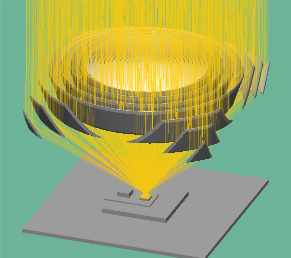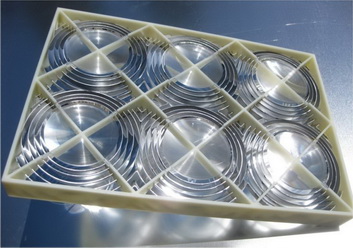DISRUPTIVE SOLAR ENERGY & LIGHTING INNOVATIONS
RING-ARRAY OPTICAL CONCENTRATOR
A HIGH-POWER MIRROR WITH LENS-LIKE OPERATION
The ring-array concentrator (RAC) is a point-focus optical system that combines the high collecting power of mirrors with the design flexibility and practicability of lenses. RAC is formed by an array of nested ring reflectors. Each ring reflector has a curved, mirrored surface and is provided with light focusing capability. Note the slopes of each ring in a cross-section. These are carefully calculated to beam all of the concentrated fluxes from individual rings to the same focus below the collector. The spacing areas between the rings are used to direct light to the common focus, making sure that no part of the concentrated beam is shaded by the rings.
Such unique combination of the principle of operation of a reflector with the rear focus of a lens was so unusual that it prompted the inventors, Drs. Viktor Vasylyev and Sergey Vasylyev, to also invent a new name for this optical configuration: Reflective Lens(TM). Reflective lenses are essentially non-imaging, refraction free, achromatic optical systems. The use of specular reflection to bend light is critical for maintaining high performance since it provides the highest possible optical efficiency and magnification power. On the other hand, the rear focus provides ultimate design convenience and eliminates the shading problem commonly faced by mirror-based light harvesting sytems (the receiver in the focus to harvest the concentrated energy inevitable shades at least a portion of the incident light, thus wasting some energy). The dual nature of RAC, its manufacturability to any size and high degree of customizability open up a whole new range of possibilities in designing high-concentration optical systems, particularly in the solar energy field.
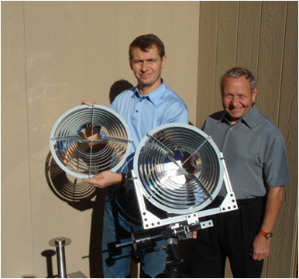
INVENTORS OF REFLECTIVE LENSES
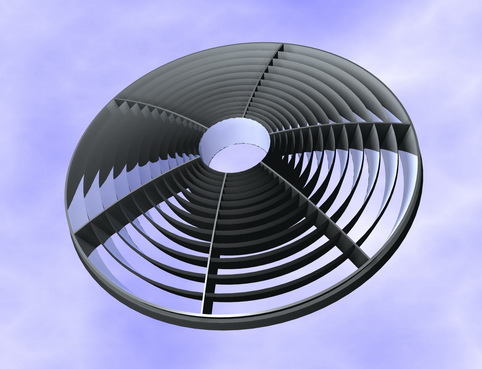

BEAM SHAPING TO SUIT DEMANDING APPLICATIONS
By an analogy to conventional parabolic or spherical mirros, reflective lenses can be have a point-focus or a linear configuration.
Very high optical concentration is created with the point-focus RAC when the individual focal spots produced by each rings are overlapped with high accuracy. Such configuration is useful when achieving high temperature is required, e.g., for a solar powered furnace or a heat-driven engine.
In an alternative configuration, the individual focal spots can be spread out apart from each other thus broadening and flattening the concentrated flux distribution. Highly uniform concentrated fluxes have been demonstrated using this technique. The efficient flux homogenization is unique to RAC optics and is possible due to the segmented nature of the Reflective Lens as well as its inherently high magnification power which provides sufficient cushion for spreading the concentrated beam over the entire area of the receiver.
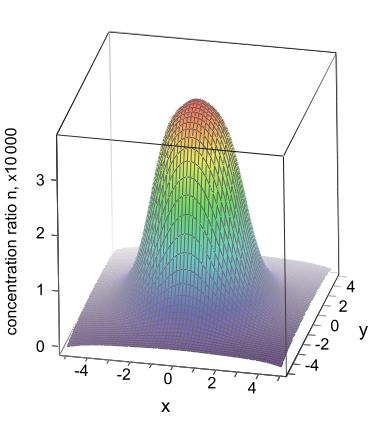
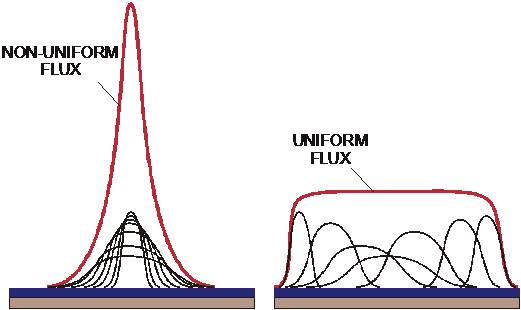
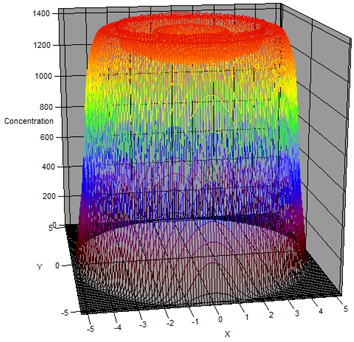
TARGETING HIGH-GROWTH MARKETS
Concentrating Solar Power (CSP). Flat-plate solar panels is not the only way to generate electricity from sunligh. In fact, CSP, which uses optical concentrators to collect sunlight into a smaller area before harvesting, is oftentimes a more preferred method of solar electricity production, especially in the areas with high sunlight abundance. Worldwide CSP markets are already beginning to explode and are anticipated to reach more than $50 billion by 2020. EIA estimates that CSP could reach up to 10% of the global electricity production.
RAC is ideally suited for CSP technologies that require relatively high sunlight concentrations. For example, RAC can easily provide high enough temperatures to drive a micro-turbine or a Stirling engine to produce electricity at efficiencies close to 30%. Its modular design allows for developing modular distributed generation systems ranging from 3 to 100 kW in size. By employing a suitable thermal storage technology, such as ammonia-based thermo-chemical storage, electricity can be generated even when the sun is not shining.
Concentrating Photovoltaics (CPV). CPV is a sister technology to both CSP and flat-plate photovoltaics, as it employs solar concentrators to focus sunlight onto smaller-area PV cells. CPV is also poised to high growth at >40% CAGR and is expected to reach around 1 GW of production capacity by 2017.
Recent studies have shown that RAC is well suited for high-concentration CPV (HCPV). Particularly, next generation HCPV modules employing ultra-efficient thriple-junction (III-V) solar cells with completely passive cooling are being developed at Lucent Optics. Such modules incorporate a number of mini-RACs arranged in square parquets to form a flat-plate HCPV panel. While allowing for a low cost of manufacturing, the lightweight RAC-based HCPV modules will feature the power density more than twice as that of Si-based non-concentrating panels at 30% or more solar-to-electric conversion efficiency.
